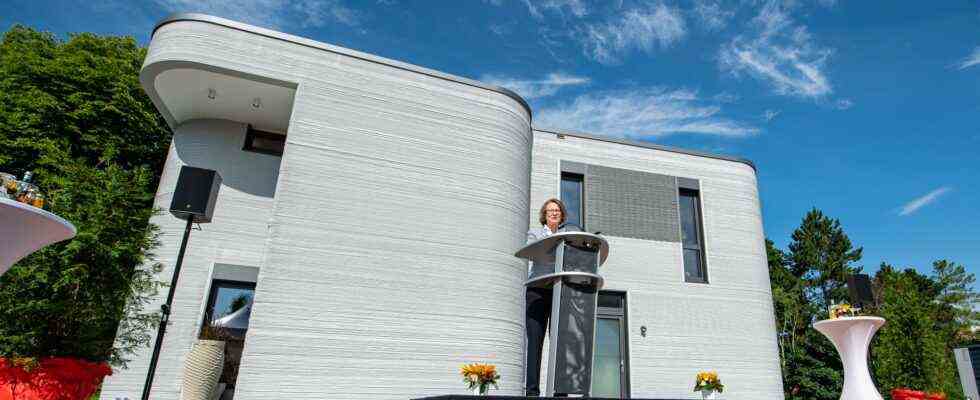Status: 07/26/2021 9:08 pm
A house made from a 3D printer? The first residential buildings are being built in Germany that are printed layer by layer from concrete. The makers of the single-family home from Beckum in Westphalia want to revolutionize the construction industry.
Architect Waldemar Korte proudly opens the front door to the 160 square meter detached house. The eye immediately falls on the special wall structure in the stairwell, which clearly shows the individual layers of concrete. “The special thing is that we as planners get a lot more freedom with the concrete printer,” says Korte. “We can let off steam in the form. We are much faster in the construction. We need a lot less staff, and that helps with the shortage of skilled workers in the construction.”
The single-family home, which is unique in Germany, needed 100 hours, i.e. just a little more than four days of printing time. Korte and his team hope that the technology will make building nationwide much faster and, in the long term, even cheaper. “We are currently 15 percent above conventional construction methods. In five years at the latest, we will be more cost-effective than conventional construction.”
A look inside the house: The characteristic layers from the printer can also be clearly seen here.
Build like a master confectioner
As with a cake, the 3D printer, which is attached to a frame, has applied the special concrete layer by layer. The individual layers are visible throughout the house, on the fireplace, in the bathroom, on the facade. In five minutes the printer can create a square meter of wall and move on its programmed path over a metal frame.
The material was developed over the years so that it can be shaped and resilient, explains Fabian Meyer-Brötz from PERI. “When printing with concrete, we need a material that is stable enough to hold up the next layers,” says Meyer-Brötz. “Even so, it has to remain chemically active so that it bonds to the material and statically does what we want.” The team uses a nozzle to spray the concrete where walls are to be built and leaves gaps where doors or sockets follow. “For us it is a revolution in the entire construction industry, and indeed in the entire process,” says Meyer-Brötz. “It’s not just the walls that we print. The planning and all other processes on the construction site are also influenced by this new technology.”
A relief for the industry?
Felix Pakleppa, General Manager of the Central Association of the German Construction Industry, sees the new and fast procedure as an opportunity to relieve the strained construction industry. However, there are only two printed objects in Germany of around 300,000 new apartments and houses that were completed in Germany in 2020. It’s an exciting trend that might help. “We believe that 3D printing will find its market primarily in prefabrication. In the hall, parts are produced by the printer, then transported to the construction site and assembled in a modular manner,” says Pakleppa. This has the advantage that the printer does not always have to be set up on the construction site and then moved.
A vision made of gray concrete
Instead of a column of masons who worked for a week, in Beckum it was a printer and only a few specialists who had to monitor printing on the laptop. Now the completed house with its two floors shines in the Westphalian sun. Should you no longer need the house, you could simply vacuum it again and print it again. You have to plan more before building, but save a lot of time during construction, explains Meyer-Brötz. “We want to have fewer skilled construction workers, but the bottom line is to support the craft,” says Meyer-Brötz. “With an attractive technology, we can inspire young people to want to work on a construction site again.”
The two floors in Beckum are initially empty. For a year and a half, the architect Korte and his team want to use the house for presentation and research purposes. “We are scratching the surface today of what we can do with the printer in the future,” he says. The company wants to tackle the next project using 3D printing in Arizona, USA. With their vision, they want to rethink the way houses are built, layer by layer.

